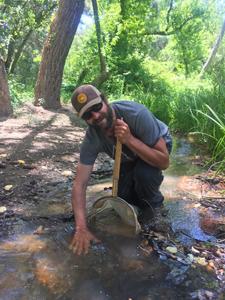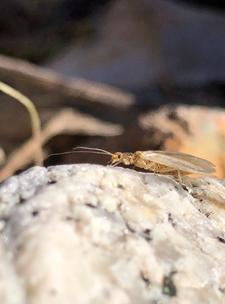Towards a mechanistic understanding of the multi-scale effects of drought on riverine biodiversity
Summary:
Intermittent streams comprise more than half of the global river network. However, how biodiversity persists in these ecosystems is still largely unknown. This is particularly true for aquatic invertebrates, a diverse group of organisms that plays a central role in sustaining fishes and amphibians of conservation concern in California streams. We will study an intermittent river network in central California to investigate how droughts influence aquatic invertebrate communities—and how these are able to bounce back when streamflow returns. Our results will help managers to anticipate the ecological effects of flow regime change in the light of California’s increasing hydroclimatic variability.
Investigator:
Albert Ruhi, Twitter: @Albert_Ruhi
Assistant Professor, Dept. Environmental Science, Policy, and Management
UC Berkeley
Project description:
Climate change is shifting the distribution of the Earth’s water resources spatially and temporally. In most of California, multi-year droughts are projected to increase in frequency and magnitude by the end of the century. Predicting the impacts of drought on freshwater ecosystems remains, however, a key challenge.
This is largely because drought operates at multiple scales. Locally, it often causes die-offs of unadapted species; regionally, it fragments habitat and interferes with the dispersal mechanisms that allow species to recolonize. These two processes may interact in important, yet poorly understood ways.
Here we propose to combine observational and experimental approaches to advance our understanding about how stream biodiversity responds to drought. We will focus on aquatic invertebrates, a diverse, key component of aquatic food webs that sustain fishes and frogs of conservation interest in California’s intermittent streams. Over the course of the project, we will seasonally survey aquatic invertebrate communities in the Chalone Creek basin, an intermittent stream network that exhibits clear gradients in drought severity and habitat fragmentation, in Pinnacles National Park.
We will 1) study variation in invertebrate taxonomic composition and biological traits across a gradient of drought severity and habitat fragmentation, 2) develop a dispersal experiment to parse out the relative importance of different resistance and resilience mechanisms, and 3) combine newly-generated data with existing environmental and biological data to quantify temporal consistency in invertebrate responses to drought.
The research will allow us to identify critical thresholds in hydrologic connectivity and may help design strategies to insure river ecosystem resilience to drought. Identifying ecological thresholds is essential to find ways to balance human and ecosystem needs for fresh water in California’s increasingly variable hydroclimate.


